Para português, clique aqui.
This is a long and very detailed review.
I received some products from Swanicoco, a cruelty-free Korean brand that focuses on developing “natural” cosmetics by using fermented ingredients. They don’t use harmful (to some people) ingredients such as alcohol, artificial fragrances, mineral oil, parabens, benzophenones and so on. Instead of using these ingredients that might be harmful, they trust on natural and fermented extracts. Moreover, they try to use fermented extracts instead as purified water (GOOD JOB, Swanicoco!) and this is just perfect!
They were looking for people to receive some products in exchange for an honest review and I’ve been selected. Kevin, from Swanicoco, emailed me explaining about this project and asked me my skin problems. I explained him about my skin (which is mainly dehydrated) and he asked me if the following products would be good:
- Bitamin C Calmdown Skintoner;
- Bitamin C Calmdown Emulsion;
- Ginseng Callus Gold Ampoule;
- Intensive Vital Swan Cream;
- Some sheet masks.
I answered yes. The products seemed great!
https://www.instagram.com/p/BT7LGJbAaqM/?taken-by=rafaeldiascosta
I’m gonna be explaining a little bit more about the brand because I found it interesting, and then I will follow with the review.
About the brand
Swanicoco started off its business by creating naturally fermented soaps.
To produce excellent natural soaps, we carefully select the best medicinal herbs, boil them, and then ferment them.
Currently, we are the top natural cosmetics company in the Republic of Korea. Thanks to our corporate philosophy that only those obtained from nature, and not artificial chemical products, are the best. Moreover, we put a foremost priority on obtaining high-quality ingredients, engage in ceaseless bio development research to create a natural biosystem, and relentlessly accept challenges. Furthermore, we always keep a beginner’s mind to create products as though they are for our own family.
We will continue working hard to provide safe and healthy natural cosmetics for your skin.
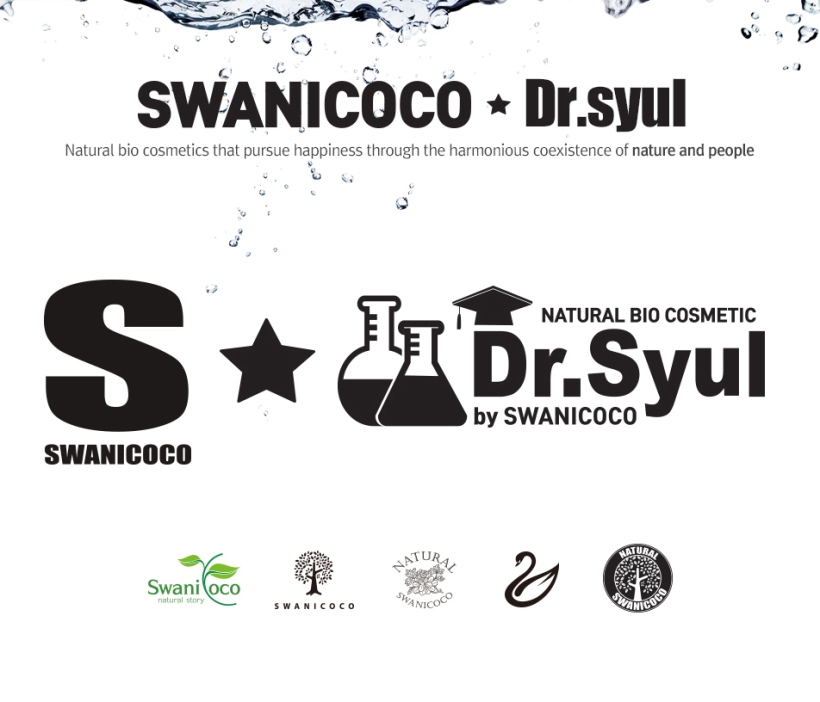 Swanicoco does not use ingredients that are harmful to the skin such as dyes, artificial fragrances, chemical preservatives, steroids, alcohol, mineral oil, parabens, and benzophenones. Instead, we try our best to use only natural and fermented extracts and have engaged in ceaseless research to make sure that natural components do not conflict one another when combined. We have thus obtained the optimal mixing method. Thanks to our efforts to create natural cosmetics that are safe, hypoallergenic, mild, and ideal for all skin types, we have succeeded at integrating biotechnology into eco-friendly natural ingredients for our cosmetics to have the maximum skin-improving effect.
Swanicoco does not use ingredients that are harmful to the skin such as dyes, artificial fragrances, chemical preservatives, steroids, alcohol, mineral oil, parabens, and benzophenones. Instead, we try our best to use only natural and fermented extracts and have engaged in ceaseless research to make sure that natural components do not conflict one another when combined. We have thus obtained the optimal mixing method. Thanks to our efforts to create natural cosmetics that are safe, hypoallergenic, mild, and ideal for all skin types, we have succeeded at integrating biotechnology into eco-friendly natural ingredients for our cosmetics to have the maximum skin-improving effect.
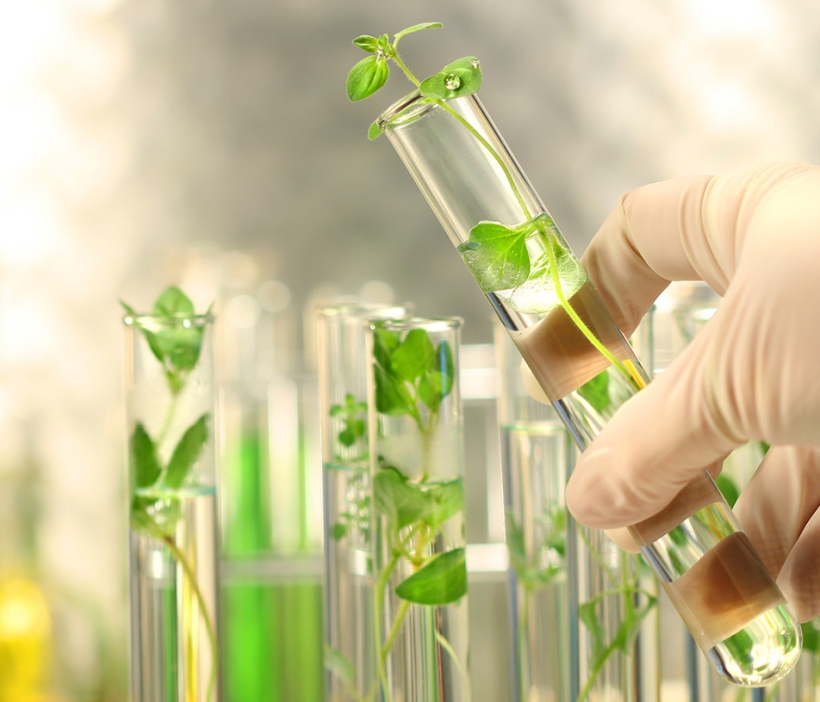
The main ingredients of Swanicoco’s cosmetics are either extracted from Korean natural plants; patented ingredients from Europe, including France, which leads the global cosmetics ingredients market; or organically certified ingredients from the United States and Australia. Our products are created to be safe and to have great effects, with Epidermal Growth Factor (EGF), Fibroblast Growth Factor (FGF), and protein peptides.
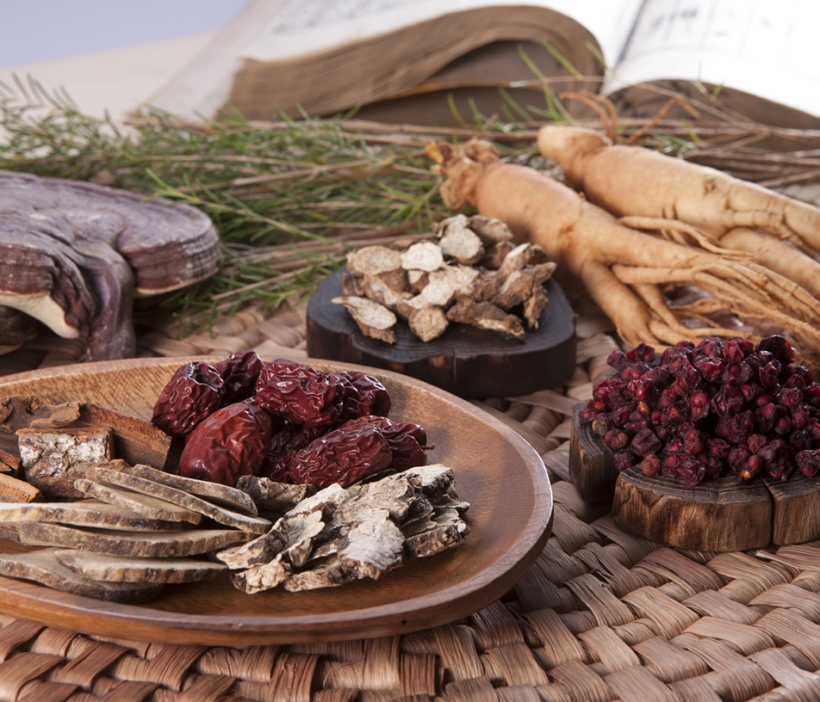
Below you can find the brand history.

You can zoom in if you want to read this image.
Fermented products, explanation by Swanicoco
Fermented cosmetics applies the same technology used for fermented foods. During the fermentation process, particles become smaller, thereby enhancing their absorption rate on the skin. In addition, as they are natural components, they do not irritate the skin. Furthermore, during fermentation, nutrients that hitherto did not exist, such as amino acids and antioxidants, are generated to treat damaged skin and prevent skin aging. Swanicoco uses grains, fruits, vegetables, and Korean medicinal herbs as ingredients for fermentation, and integrates biotechnology into eco-friendly natural components to help improve the skin. Moreover, instead of purified water, we use fermented extracts, which accounts for 80% of our cosmetics. We have thus completed a step further through our upgraded fermented cosmetics technology.
Ok, let’s move on! As the title says, the product that I will be reviewing is the Bitamin C Calmdown Skintoner.
Product description
I couldn’t find a detailed explanation in English, but this product is a toner developed for skins that lack moisture, elasticity, and skins that are irritated and rough. It provides you a high amount of moisture and makes your face plump, soothed and healthy-looking.
Ingredient list
Galactomyces Ferment Filtrate, Aloe Barbadensis Leaf Extract, Methylpropanediol, Glycerin, Niacinamide, Sodium Ascorbyl Phosphate, Allantoin, Tetrapeptide-32, Caffeoyl Decapeptide-17, rh-Oligopeptide-1, Saccharomyces/Camellia Japonica Flower/Castanea Crenata Shell/Diospyros Kaki Leaf/Paeonia Suffruticosa Root/Rhus Javanica/Sanguisorba Officinalis Root Extract Ferment Filtrate, Saccharomyces/Ophiopogon Japonicus Root/Panax Ginseng Root/Poria Cocos/Rehmannia Glutinosa Root Ferment Filtrate, Sodium Hyaluronate, Saccharomyces/Viscum Album (Mistletoe) Ferment Extract, Lactobacillus/Soybean Ferment Extract, Saccharomyces/Imperata Cylindrica Root Ferment Extract, Xanthan Gum, Hydrolyzed Collagen, Oryza Sativa (Rice) Extract, Houttuynia Cordata Extract, Rheum Palmatum Root Extract, Lonicera Japonica (Honeysuckle) Flower Extract, Larix Sibirica Wood Extract, Rosa Damascena Flower Oil, Arginine, 1,2-Hexanediol, Caprylyl Glycol, Vitis Vinifera (Grape) Fruit Extract, Citrus Aurantium Dulcis (Orange) Fruit Extract, Malus Domestica Fruit Extract, Pyrus Pyrifolia (Pear) Fruit Extract, Musa Sapientum (Banana) Fruit Extract, Acrylates/C10-30 Alkyl Acrylate Crosspolymer, Polysorbate 80.
The total number of fermented ingredients: 14.
Analysis of the ingredients
I am going to be explaining a bit of every ingredient. It took me some time to gather information about these ingredients. There are a lot of information and it’s very educative.
Galactomyces Ferment Filtrate (Rice Ferment Extract): Also known as the famous Pitera, it’s derived from a fermentation process. This ingredient is rich in vitamins, amino acids, minerals and more. Its resemblance is close to the skin’s Natural Moisturizing Factors (NMFs). Galactomyces Ferment Filtrate (GFF) has been demonstrated to provide a reduction in the appearance of skin pigmentation and dampening of oxidative stress.
Human melanoma cells and normal human melanocytes derived from both light and dark skin were treated with 5% and 10% of GFF every other day and evaluated for melanin content. In human melanoma cells, melanin was reduced by 60% with both dosages within 12 days. In normal human melanocytes, melanin was reduced by 35% and 55%, respectively, within 25 days. It also increased the expression of glutathione S-transferase, a detoxifying enzyme and downstream target of Nrf2 (a protein that regulates the expression of antioxidant proteins that protect against oxidative damage triggered by injury and inflammation). [1]
Galactomyces Ferment Filtrate also increased the expression of caspase-14 (dysregulation of caspase-14 expression is implicated in impaired skin barrier formation). [2]
Galactomyces Ferment Filtrate appears to have beneficial effects on skin barrier proteins. Although the exact compounds producing this effect are unknown, GFF may be useful for restoring the decrease of barrier proteins in Th2-mediated skin disorders. [3]
Aloe barbadensis Leaf Extract: Aloe vera is a traditional medicinal plant whose gel has been widely used in skin care because it soothes sunburn, hydrates the skin, reduces the appearance of puffiness, protects the skin and so on. You can find a bunch of interesting studies on Pubmed.
This study reported the protective effects of aloe sterols (one of its active) against UVB-induced photoaging in hairless mice. It resulted in a significant improvement of UVB-induced skin dryness, epidermal thickness, and wrinkle formation.
Cutaneous wound healing is a complex process involving various regulatory factors at the molecular level. Aloe vera is widely used for cell rejuvenation, wound healing, and skin moisturizing. This study reported that Aloesin (from Aloe vera) accelerates skin wound healing. More importantly, aloesin treatment resulted in the activation of Smad and MAPK signaling proteins that are key players in cell migration, angiogenesis, and tissue development;
Methylpropanediol: It’s an organic glycol that works as a solvent. It can enhance the penetration of ingredients into the skin. It can also hydrate the skin and leave it smooth;
Glycerin: Also called glycerine or glycerol, glycerin is a skin-replenishing and restoring ingredient. It is a humectant naturally found in the skin;
Niacinamide: Niacinamide is an effective skin lightening compound that works by inhibiting melanosome transfer from melanocytes to keratinocytes. It improves the stratum corneum barrier, decreases transepidermal water loss (TEWL). Also, niacinamide is well tolerated and isn’t subject to oxidation.
A Review of the Range of Effects of Niacinamide in Human Skin;
Sodium Ascorbyl Phosphate: Water soluble and stable form of ascorbic acid (vitamin C) that works as an antioxidant and has a potential effect in brightening an uneven skin tone. It was showed that 1% of Sodium Ascorbyl Phosphate has a strong antimicrobial effect with a log reduction of 5 after 8 h on P. acnes. Further on in a human in vivo study with 20 subjects a Sodium Ascorbyl Phosphate oil in water formulation significantly prevented the UVA-induced sebum oxidation up to 40%.
Allantoin: It has skin soothing, healing and keratolytic (ability to remove excess of skin) properties. It enables the skin to absorb more moisture;
Caffeoyl Decapeptide-17: It is a peptide used in cosmetics for anti-inflammatory purposes, like treating atopic dermatitis. Nothing about this peptide is available in English, this information I got from a Korean study that I couldn’t understand everything. If I get more information, I will edit this section;
Tetrapeptide-32: I also didn’t find anything about this peptide. It must be a newbie in the skincare market. I asked for more information from Swanicoco. When I receive it, I will edit;
rh-Oligopeptide-1 (Epidermal Growth Factor or EGF): It’s a Nobel Prize winner protein found in the fibroblast cells of the dermal layer and stimulates cells to produce collagen. It stimulates the synthesis of DNA, RNA, hydroxyproline, and hyaluronic acid. It plays an important role in the regulation of cell growth, differentiation, proliferation, and survival. As the protein is applied to the skin, all important tissue regeneration begins. The deficiency of this protein will result in a delay of wound healing, skin aging, and formation of wrinkles, difficult scar healing, age pigment, and more. As we age, our body doesn’t produce as much EGF as it used to.
A study made to check the effects of topical application of the EGF showed that it was effective in reducing fine lines and rhytides, improving skin texture, pore size, and various dyschromatic conditions apparent within the first month of use in subjects with moderate to severe photodamaged and aged skin and the effects continued improving for duration of the study.*
Saccharomyces/Camellia japonica Flower/Castanea crenata Shell/Diospyros kaki Leaf/Paeonia suffruticosa Root/Rhus javanica/Sanguisorba officinalis Root Extract Ferment Filtrate: It’s the fermentation of Tsubaki, Korean (or Japanese) Chestnut, Japanese Persimmon, Moutan Cortex, Java Brucea, and Great Burnet by the microorganism Saccharomyces.
Properties of each one separately:
Camellia japonica (Tsubaki) Flower: It is a rich source of antioxidants, vitamins, phytosqualene, and Omega-6 fatty acids.
A study done with isolated compounds from an extract of Camellia japonica flower from Korea was done. The principal constituents significantly inhibited melanogenesis. Camellioside B showed potent inhibition of melanogenesis. Camelliosides tended to enhance proliferation in normal human neonatal skin fibroblasts (enhancers of fibroblast proliferation are thought to be important in the wound-healing process).*
Castanea crenata (Korean/Japanese Chestnut) Shell: The inner shell of the Castanea crenata has been used as an anti-wrinkle/skin firming agent in East Asia, and preliminary experiments have found that a 70% ethanol extract from this plant material can prevent cell detachment of skin fibroblasts from culture plates. [1] It also has anti-glycation activity. [2]
Diospyros kaki (Japanese Persimmon) Leaf: Persimmon leaf has a substantial amount of tannins in different forms. Persimmon leaf extract demonstrated anti-wrinkle, and skin-lightening effect “comparable” to that of hydroquinone effect, without any side effects.
Paeonia suffruticosa (Moutan Cortex) Root: Possibly anti-inflammatory and antioxidant.
Rhus javanica (Java Brucea): Not sure what part of the plant they use (fruit, leaf…). Synonym of Brucea javanica. It has preventive effects against UVB-induced inflammation and photoaging. It has been demonstrated that it has a potent preventive activity for skin inflammation and photoaging which occurs via suppression of pathways related to epidermal growth factor receptor.
Preventive effect of Rhus javanica extract on UVB-induced skin inflammation and photoaging;
Sanguisorba officinalis (Great Burnet) Root Extract: Well-known as Ji-Yu in Korea, it has been used as a traditional medicine for centuries. It is known to be effective against many types of allergic skin diseases, including urticaria, eczema, and allergic dermatitis. It contains a compound called Ziyuglycoside I, which has been shown to have anti-wrinkle activity. [1] It was also shown to inhibit the effect of UVB-induced photodamage on rat skin. [2]
In case it’s not clear, all these ingredients (Tsubaki, Korean Chestnut, Japanese Persimmon, Cortex Moutan, Java Brucea, and Great Burnet) are all together mixed and fermented by the bacteria Saccharomyces. The final product (a liquid) is added to this cosmetic. Since all of these ingredients are fermented, the particles become smaller. I can’t know until where the effects of these ingredients, mixed and fermented, go. What I previously showed was the effect of each one of them separately and non-fermented.
Saccharomyces/Ophiopogon japonicus Root/Panax ginseng Root/Poria cocos/Rehmannia glutinosa Root Ferment Filtrate: Once again, it’s the fermentation of Dwarf Lilyturf, Ginseng, Fu Ling, and Sheng Di Huang by the microorganism Saccharomyces.
Properties of each one separately:
Ophiopogon japonicus (Dwarf Lilyturf) Root: Derived from the root of a plant called ja-no-hige (or “snake’s beard”) in Japanese, it is rich in saccharides, known to hydrate the skin. It protects the skin from dryness by boosting the skin’s moisture-retaining ability and brings a more refined texture;
Panax ginseng Root: Ginseng is the one of the most famous plant extract in Korea (if not the number one!) because it has several skin benefits such as effects in photoaging, skin cancer, dermatitis, hair loss, alopecia to mention but a few. Ginsenosides (active compounds present in Panax ginseng) exhibit diverse biological effects, including anti-inflammatory and anti-allergic;
Poria cocos (Fu Ling): Extract derived from a mushroom, which has antioxidant, anti-inflammatory and skin-soothing properties. It can regulate skin hydration and calm the epidermal nervous system. It also acts as an astringent, toning and calming agent by balancing the neuropeptides responsible for inflammation. It also offers protection from harmful environmental influences. (Source);
Rehmannia glutinosa (Sheng Di Huang) Root Extract: known in Asia as a traditional herbal medicine with anti-inflammatory, and anti-allergic properties.
Again, all of these ingredients (Dwarf Lilyturf, Ginseng, Fu Ling, and Sheng Di Huang) are mixed together and fermented by the microorganism called Saccharomyces. All of the functions that were explained previously are of each ingredient separately and non-fermented. I can’t know where these effects go when the ingredients are mixed and fermented by Saccharomyces.
Sodium Hyaluronate: The salt form of hyaluronic acid, a water-binding ingredient that has the ability to fill the spaces between collagen and elastin. Sodium hyaluronate has been used for moisturization and wound healing since its discovery, it can hold up to 1000 its own weight in water;
Saccharomyces/Viscum album (Mistletoe) Ferment Extract: It’s the extract of the plant Mistletoe fermented by the microorganism Saccharomyces. Mistletoe (non-fermented) is one of the most researched alternatives to treat cancer, and it is frequently prescribed as a complementary therapy to treat cancer, in Europe (FDA doesn’t approve its sale as cancer treatment). I couldn’t find anything regarding its effect on skin but I supposed it can help the skin to heal itself faster;
Lactobacillus/Soybean Ferment Extract: Soybean extract fermented by the bacteria Lactobacillus. Soybean is one of the major crops containing antioxidant components such as phenolic acids, tocopherols, phytic acids, trypsin inhibitor, amino acid and isoflavones containing daidzein, genistein, daidzin, and genistin. Fermentation has been reported to cause a general improvement in the natural nutritive values of soybean products, increasing total soluble solids, vitamins, free fatty acids, soluble nitrogen, free amino acids and vitamins E and C. Fermented soybean were shown to have antioxidant and whitening properties.
Saccharomyces/Imperata cylindrica Root Ferment Extract: Commonly known as Cogon Grass, Kunai Grass, or Blady Grass. I’m not sure about this compound. I couldn’t find anything from a reliable source. I’ve seen some websites saying that it has antibacterial, astringent, and intense moisturizing properties;
Xantham Gum: A polysaccharide derived from glucose or sucrose that is used as a binder, emulsion stabilizer, emulsifying surfactant;
Hydrolyzed Collagen: Water soluble collagen. Collagen molecules are generally too large to penetrate into the skin. It remains outside the surface layer but it can also provide some benefits such as skin hydration, boost skin barrier function, and make a protective film on the skin;
Oryza sativa (Rice) Extract: Rice bran contains various polyphenolic compounds with antioxidative activities, and it has long been known to inhibit melanogenesis.
It contains oryzanol, a component that acts as a protective agent against UV light-induced lipid peroxidation. The ferulic acid and its esters present in gamma oryzanol prevent skin aging. Rice bran contains approximately 500 ppm of tocotrienols. Tocotrienols when applied to the skin penetrate and get absorbed rapidly. Majorly they get accumulated at the strata corneum of the skin and act as the first line of defense with their antioxidant property. They stabilize the free radicals generated in the skin when exposed to oxidative rays. They protect the skin against UV-induced skin damage and skin aging and thus help in skin repair.
Health benefits of rice bran – a review;
Houttuynia cordata (Chameleon) Extract: This is known as a potent antioxidant herb that has been traditionally consumed as a folk medicine. It also has anti-inflammatory properties;
Rheum palmatum (Chinese Rhubarb) Root Extract: It is used to cure burns and is reported to be effective for the treatment of dermatosis such as atopic dermatitis. It is also an antioxidant and improves skin roughness and hydration;
Lonicera japonica (Honeysuckle) Flower Extract: Plant extract that functions as a skin-soothing agent. It is a very good source of flavonoids and saponins, constituents that occur in many plants and convey an antioxidant benefit. The results of a study revealed the potential use of Lonicera japonica as an external treatment for wounds.
Wound repair and anti-inflammatory potential of Lonicera japonica in excision wound-induced rats;
Larix sibirica (Siberian Larch) Wood Extract: Possibly whitening properties;
Rosa damascena (Damask Rose) Flower Oil: Antioxidant, antibacterial properties;
Arginine: A semi-essential amino acid that is produced naturally by the body. It mainly functions as an antioxidant that helps build collagen production, when applied topically. Orally, it can speed up wound healing;
1,2-Hexanediol: A highly effective and mild coupling agent and humectant. It contains many chemicals in its composition, including Alpha-Lipoic acids, an antioxidant; Chrysin, an anti-inflammatory bioflavonoid; Diosgenin, a maintainer of healthy blood cholesterol levels; Glucosamine Hydrochloride, which slows joint degeneration; and Indole-3-Carbinol, a nutrient that may prevent cancer (Source);
Caprylyl Glycol: Works as a humectant and skin conditioning agent. It’s a moisturizer and also an anti-microbial;
Vitis vinifera (Grape) Fruit Extract: Fruit acids, sugars, minerals, pectin, tannins, proteins, anthocyanins, waxes, flavonoids, xanthophylls, carotene, vitamins, polysaccharides, aromatic substances, and procyanidins are part of its composition. It has skin conditioning and antioxidant properties.
Vitis vinifera (Grape) ingredients as used in cosmetics;
Citrus aurantium Dulcis (Orange) Fruit Extract: It’s a natural astringent with powerful antibacterial properties. A tested material did not induce skin irritation or sensitization.
Safety assessment of citrus fruit-derived ingredients as used in cosmetics;
Malus domestica (Apple) Fruit Extract: It has skin conditioning and antioxidant properties;
Pyrus pyrifolia (Pear) Fruit Extract: Emollient;
Musa sapientum (Banana) Fruit Extract: Emollient;
Acrylates/C10-30 Alkyl Acrylate Crosspolymer: Commonly found in moisturizers, sunscreens, cleansers and anti-aging products, it contains both hydrophobic and hydrophilic groups allowing it to bind to both water and oil, which makes it useful when combining two phases to create a single one. It is also used as a stabilizer, viscosity enhancer and also can form a film when applied topically;
Polysorbate 80: Surfactant and emulsifier.
Acne triggers according to CosDNA
None.
Irritants according to CosDNA
None.
Safety according to CosDNA
All of them strike 1 or 2 out of 9. The only ingredient that is yellow flagged is Polysorbate 80, which strikes 3 out of 9.
CosDNA analysis: Swanicoco Bitamin C Calmdown Skintoner.
Packaging
The packaging is beautiful. It is made of plastic, with a screw cap in silver color also made of plastic.
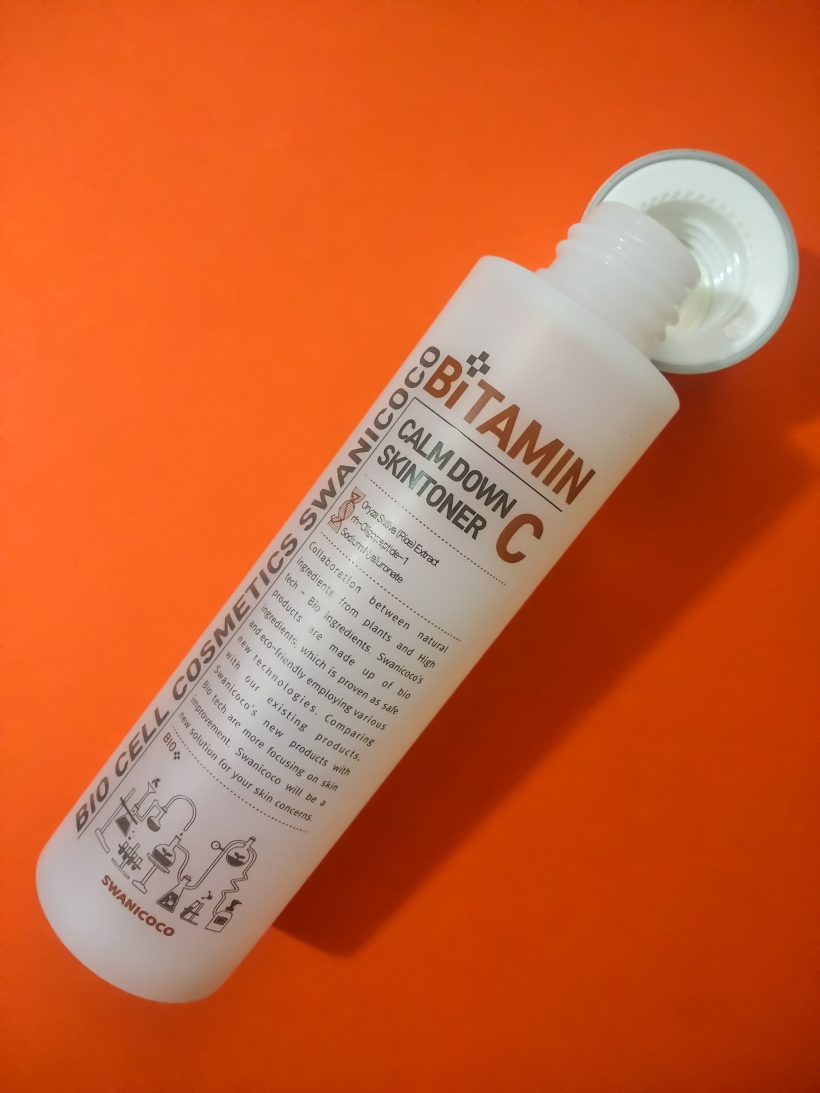
On the packaging comes writing a few things about the brand but not about the product itself. There are drawings of lab materials at the end of the package, just above the brand logo. I find it a very beautiful packaging but I would like a description of the product to come in the place of the current description.
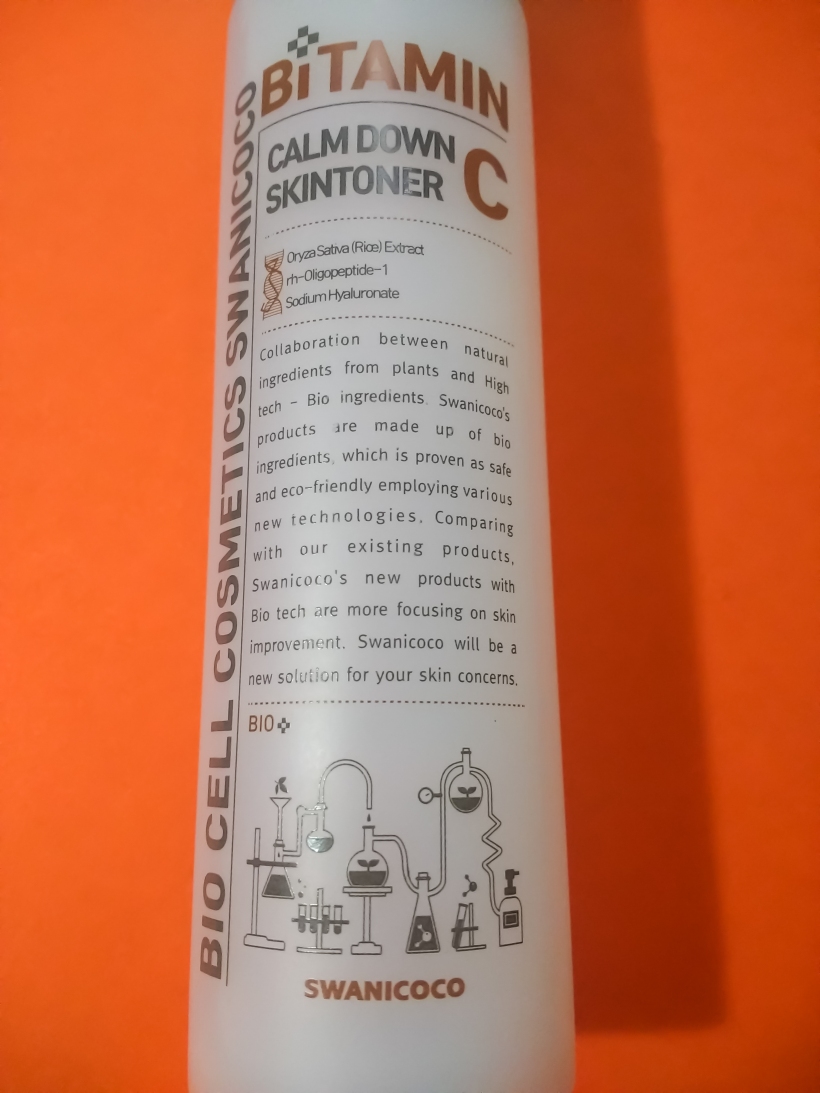
Texture and scent
The texture of the product is the way I love, it’s watery but also a bit thick. Thicker than water, I can say.
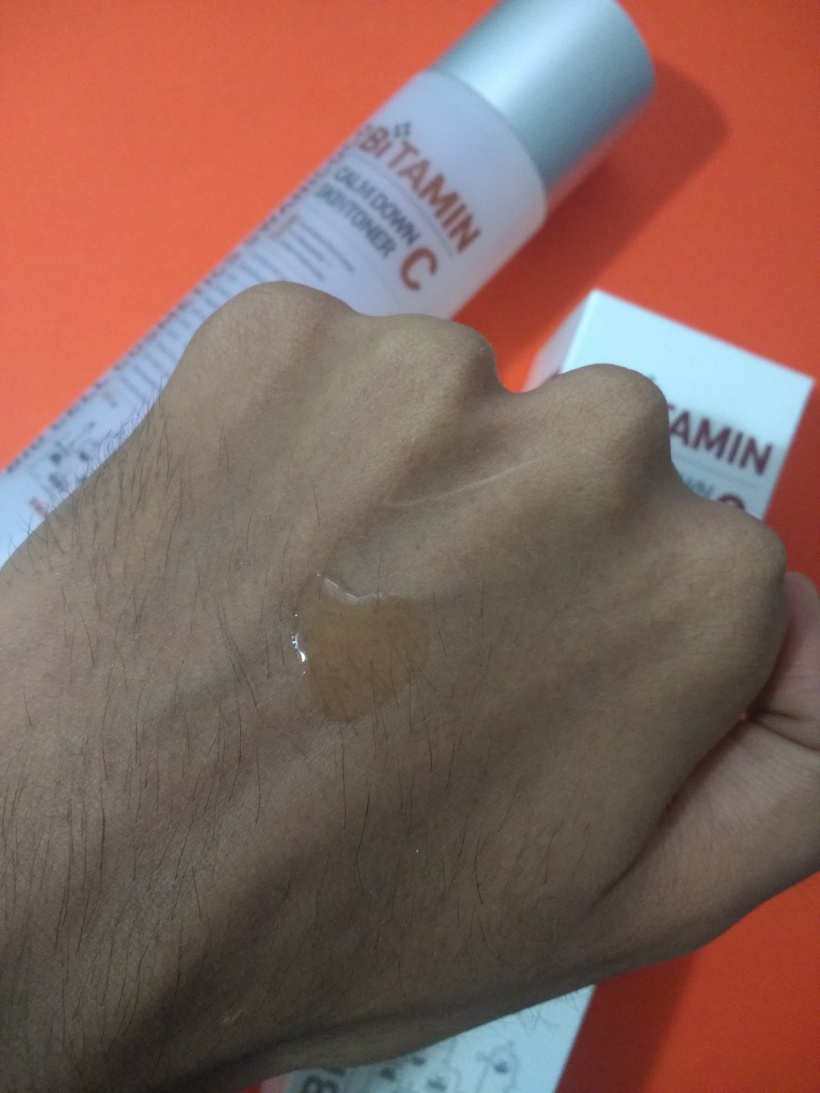
One thing that surprised me was the perfume. Let me explain, when I started using this product, I thought it had Fragrance because its smell is medium. I did not have the ingredients list at the time (the list comes in Korean) but when I asked for the list, I saw that it had no Fragrance. Anyway, the aroma is very floral, I can not distinguish which flower because I do not have much knowledge about flowers (I believe it to be peony), my husband loves the smell of this product and I like it a lot.
How to use
You can (and should) use it two or more times a day. I use it in the morning and at night.
Just apply it in the palm of your hand and then, with your fingers, take the liquid and pat on your face. I don’t suggest you use a cotton because you will lose a lot of product.
Performance
This product is mega-moisturizing. After washing my face, I apply it and I feel my face much more comfortable and “elastic”. It leaves my face very well hydrated, “plump” and leaves a healthy look. Below I show its hydration.
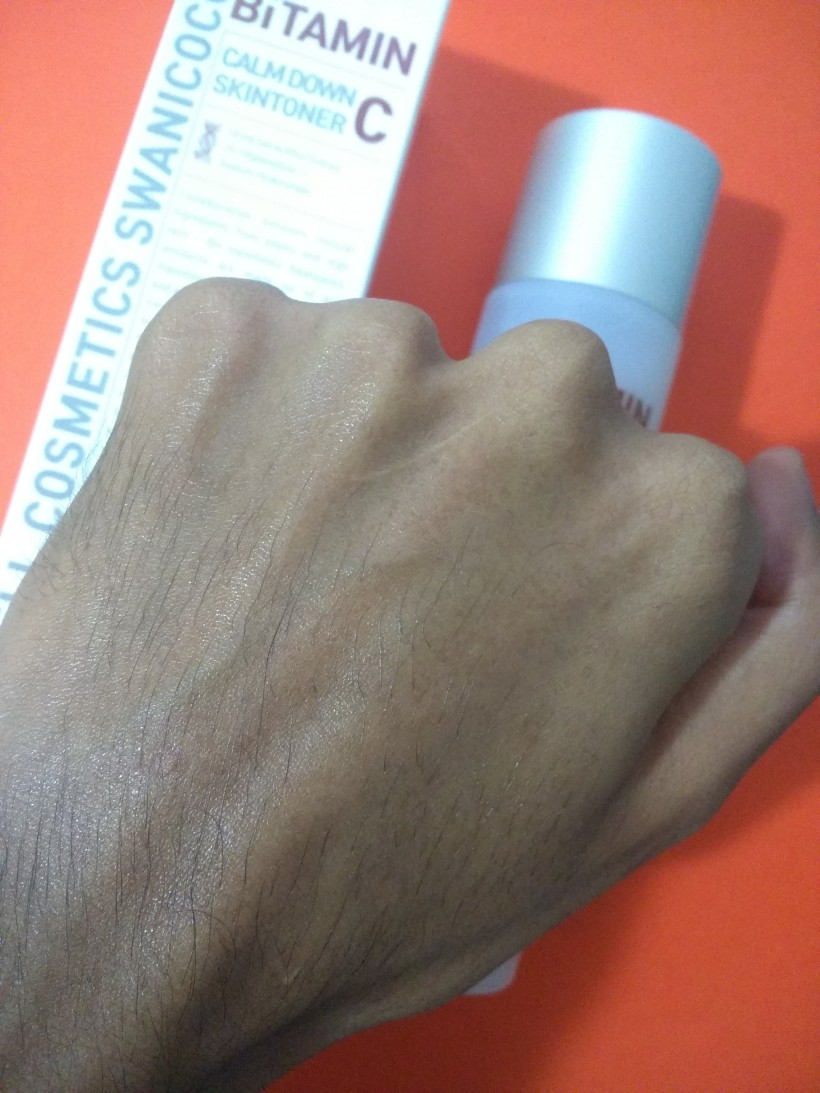
Hand with the product.
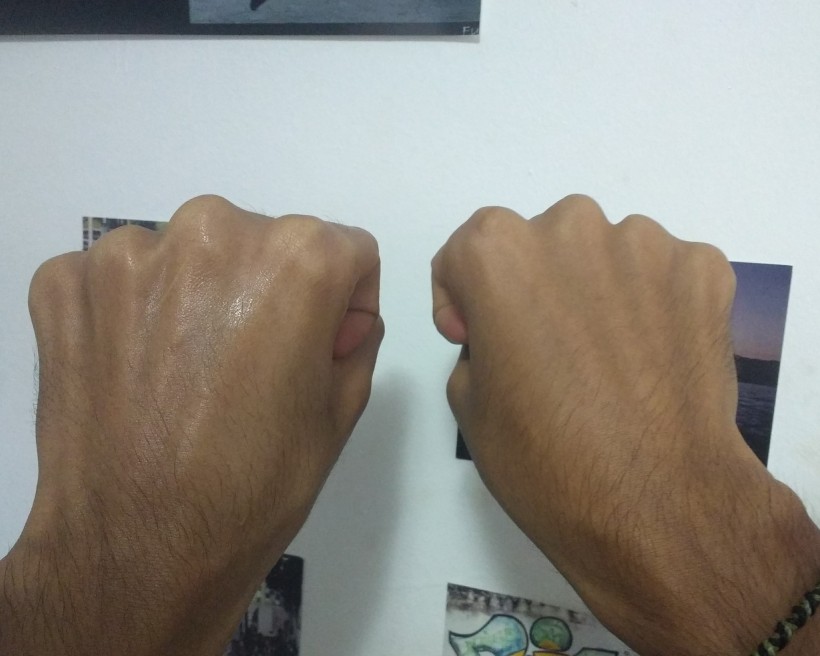
Before and after.
You can see the difference, right? The left hand is the one with the product. My hand gets much more moisturized. It doesn’t leave my face greasy or sticky.
Hydration test using Susee Nano Spray Machine
For those who don’t know yet, Susee is a machine that has a “Mist” function and also measures hydration and oil levels in the skin.
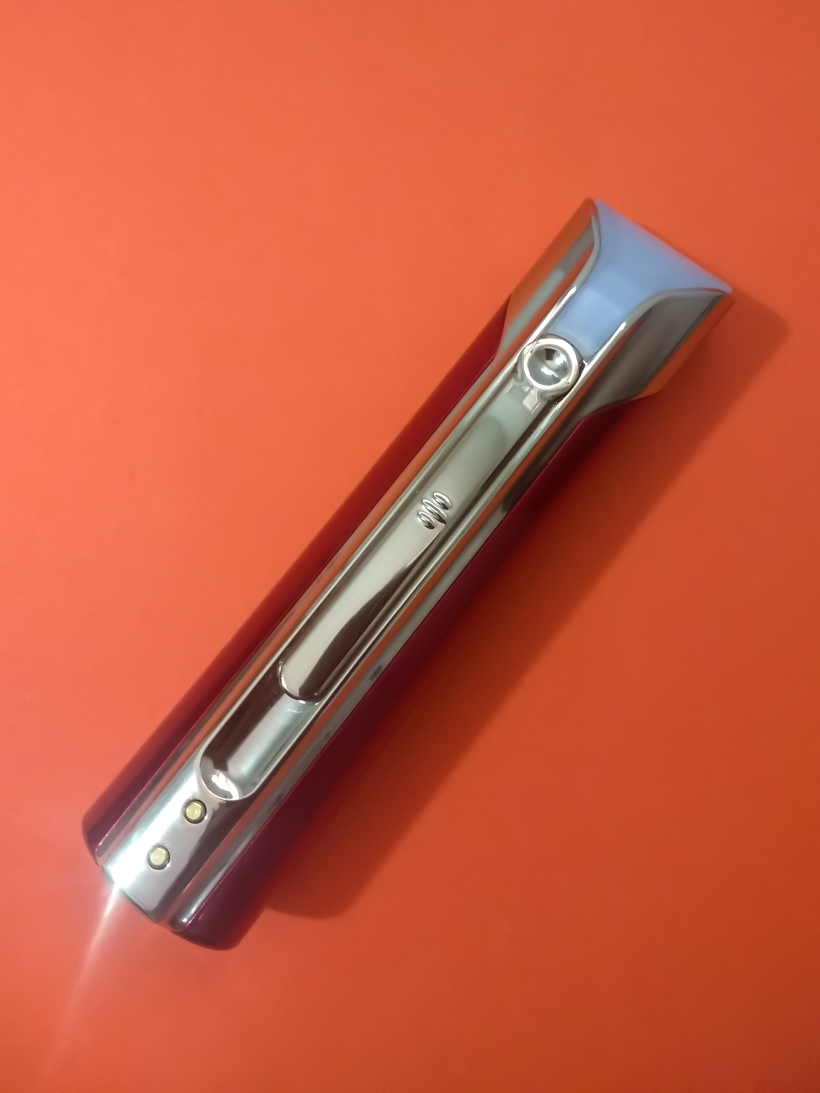
Remembering that oil is super important for the skin.
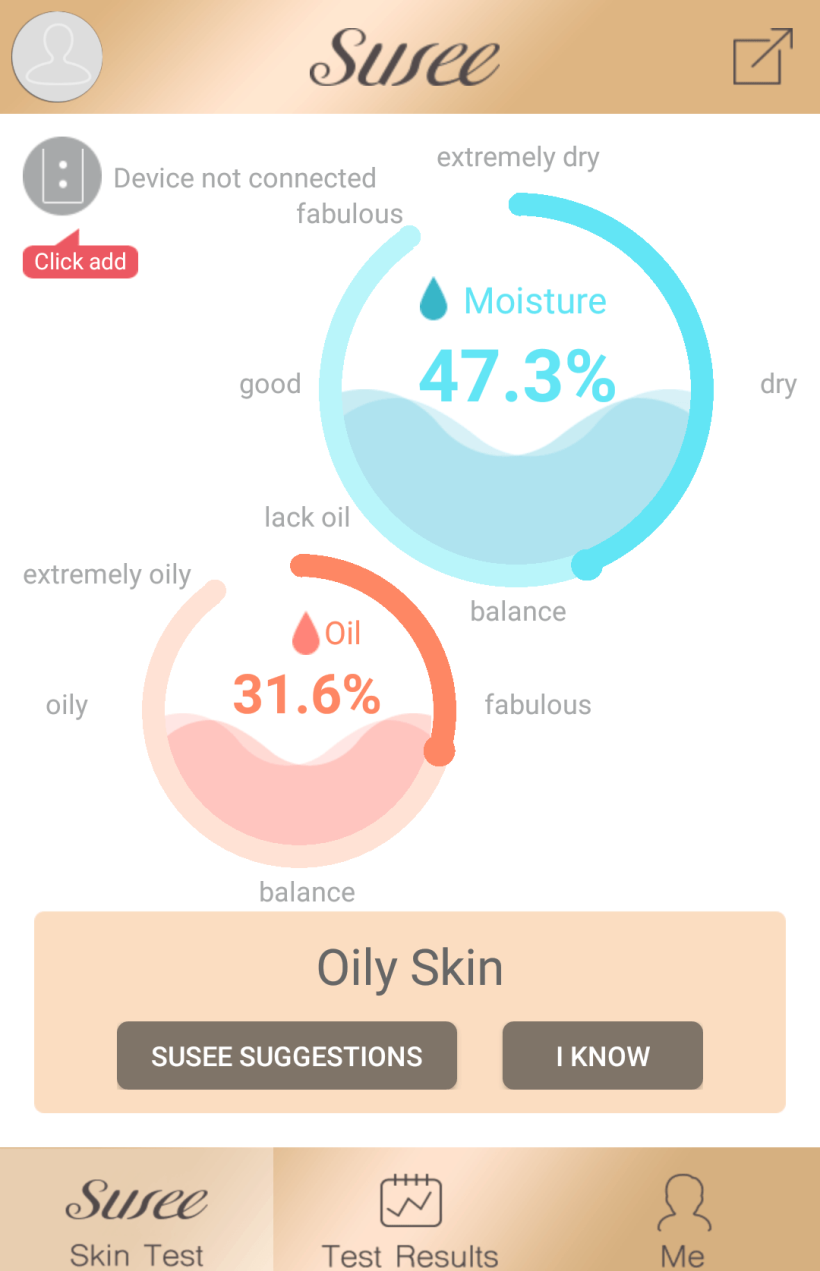
Hydration level before using the skintoner.
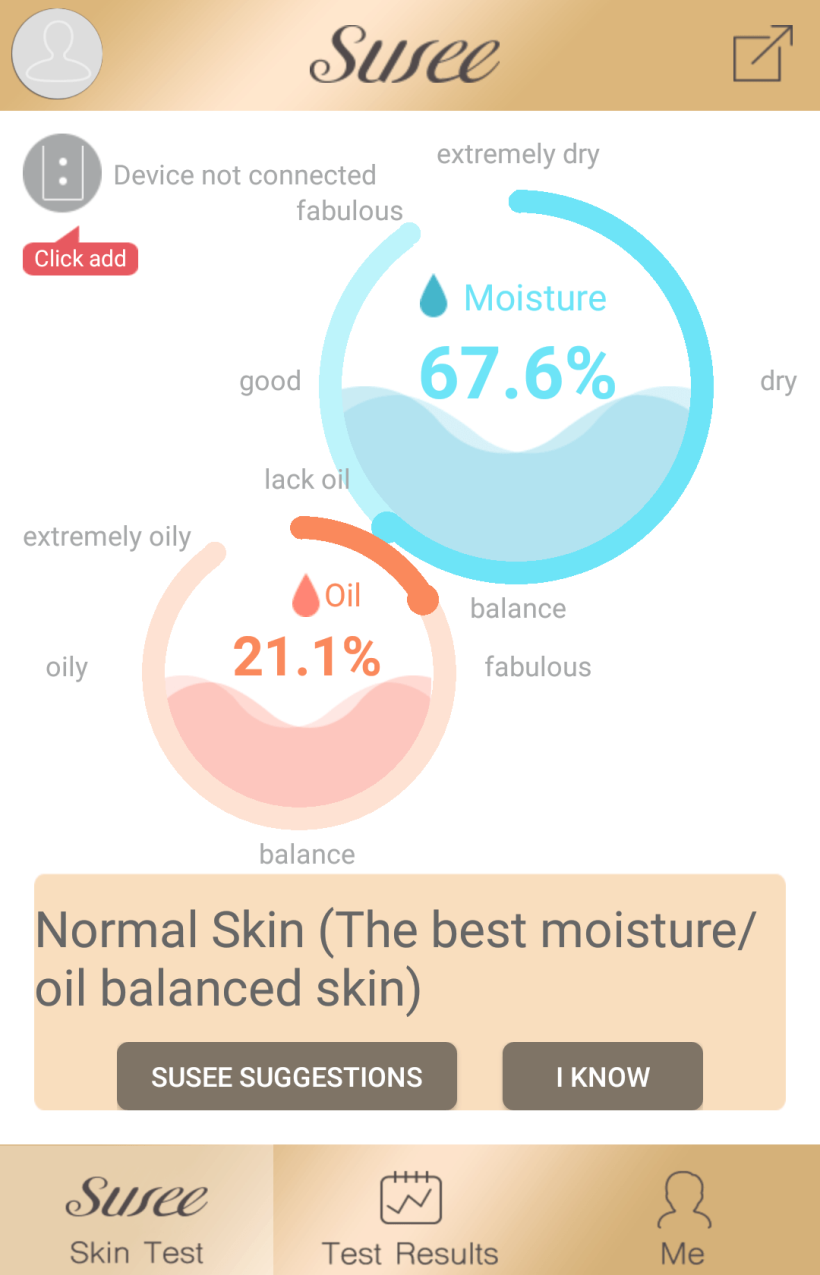
Hydration level after using the skintoner.
The photos speak for themselves.
Final thoughts
This product is not just a toner. It is much more than that. It contains a high concentration of Galactomyces Ferment (yes, the ingredient that the brand $K-II sells for a sky-high value) that helps a lot the skin to recover from damages, it’s a potent antioxidant and also brightens the skin. Furthermore, this product has an extensive list of ingredients that make the skin better. Contains anti-aging ingredients, whitening, and brightening ingredients, ingredients to increase skin resistance, ingredients to prevent and repair damage, as you saw in the explanation part of the ingredients. Certainly, this product helps to whiten the skin (with the aid of other skin whitening product(s)) and also combats wrinkles, apart of moisturizing.
My final verdict is: this product was and is the best toner I’ve used so far. I don’t even like to call it a toner, I prefer to call it “FTE” (First Treatment Essence, that product that we apply after washing the face and that usually contains fermented ingredients) because it has a formula much more superior to a toner and a much better formula than the many FTEs out there. If all this were not enough, the formula is very “clean”. It doesn’t have any ingredients that cause acne and/or irritation (according to CosDNA), BUT that does not mean that this product won’t irritate your skin, okay? Skin is a very complex organ and we can not guarantee anything.
Anyway, another product that I give the title of Holy Grail.
Rate: 5/5 and Holy Grail title.
Just remember one thing, this product worked very well for me. I can’t ensure its effectiveness for everyone but I definitely recommend you to give it a try. I could stare at its ingredient list for days.
Click here for more Toners reviews.
This product was sent by Swanicoco for review purposes. ALL the opinions are of my own and the review is 100% honest, like all of my other reviews I’ve written here and on Instagram.
This sounds great! I love how it has Saccharomyces!
LikeLiked by 1 person
It does! And it’s not expensive. 🙂
LikeLike
Ayy, this looks great. Hopefully I get to test it out. I need me some hydration.
LikeLiked by 1 person
It’s amazing. Hydration plus other benefits. 🙂
LikeLike
This product sounds amazing but when I went to a local store to check the ingredient list it contains ETHANOL. But how come yours doesn’t? Can you help me double check? Thanks!
LikeLiked by 1 person
Hello, Yong. This information was given by Kevin himself, from Swanicoco. The ingredient list on my box is in Korean and I couldn’t translate it very well.
Maybe the product has been updated. I suggest you to contact Swanicoco and double-check.
LikeLike
OK will do! Thanks! Great write up by the way!
LikeLiked by 1 person
Thanks! Good luck. 🙂
LikeLike